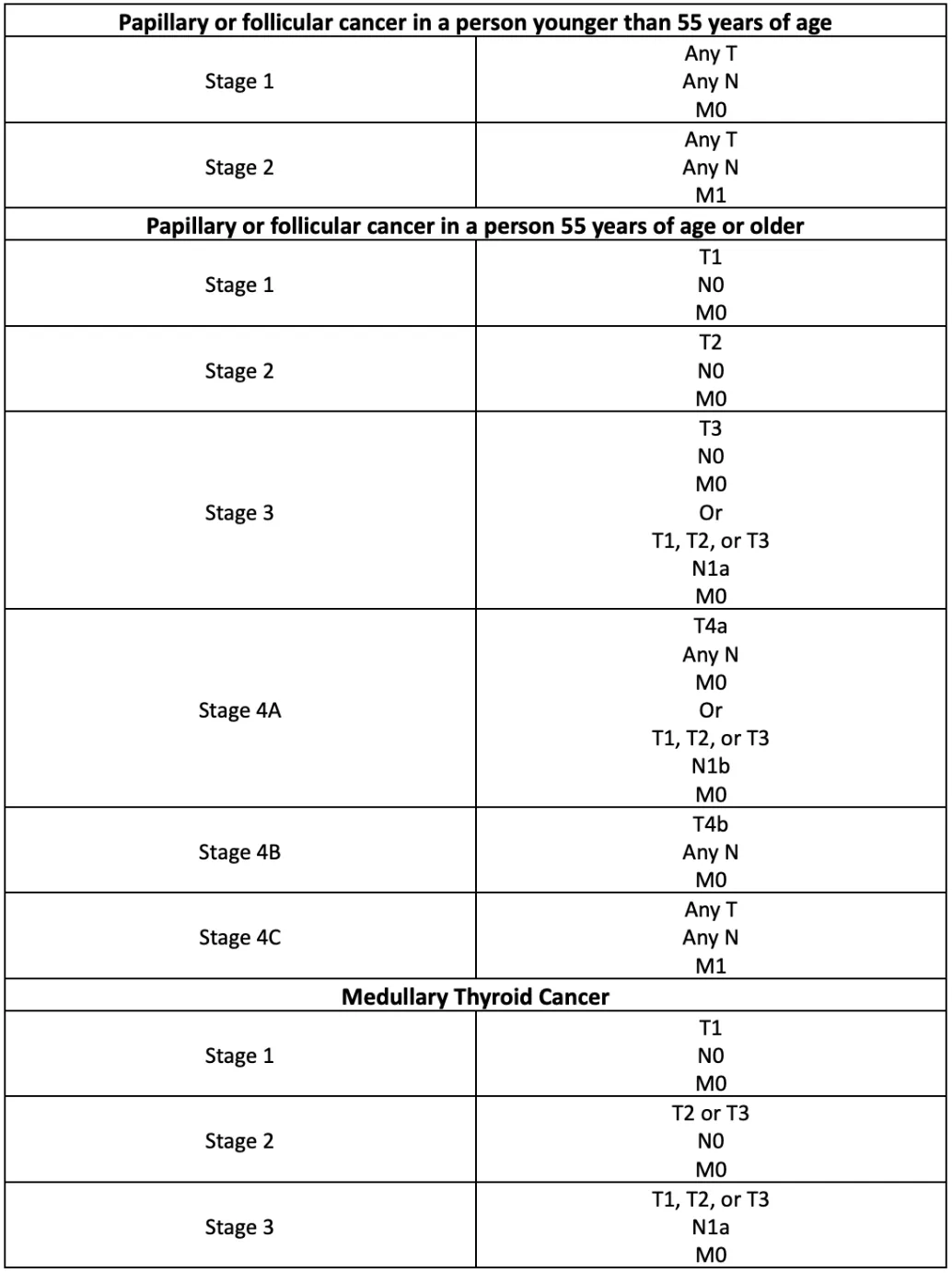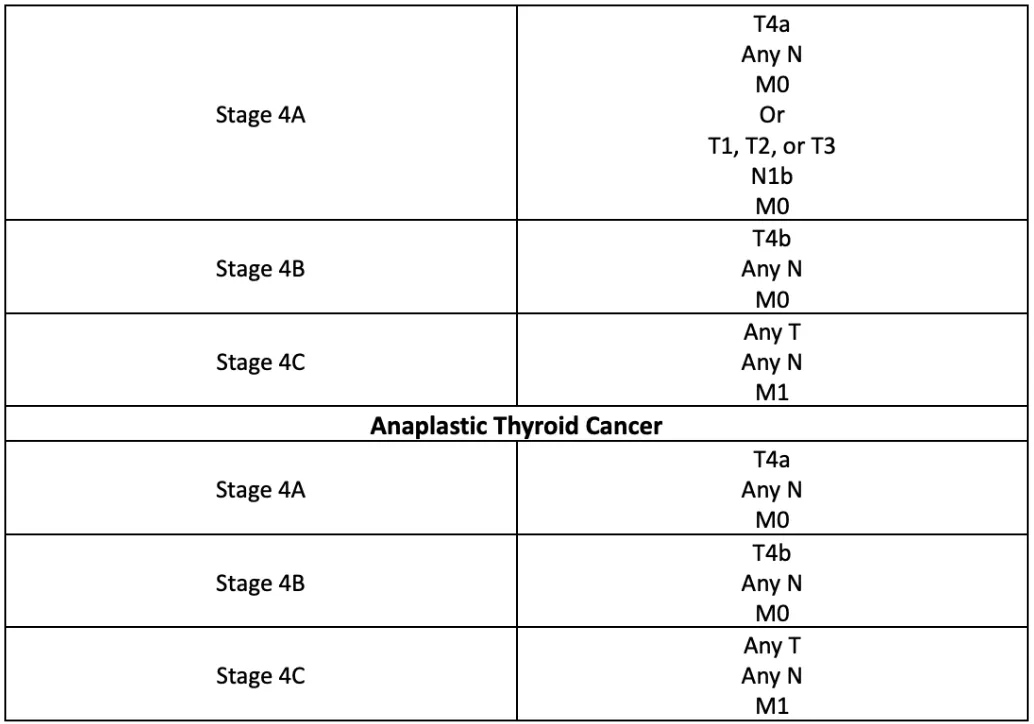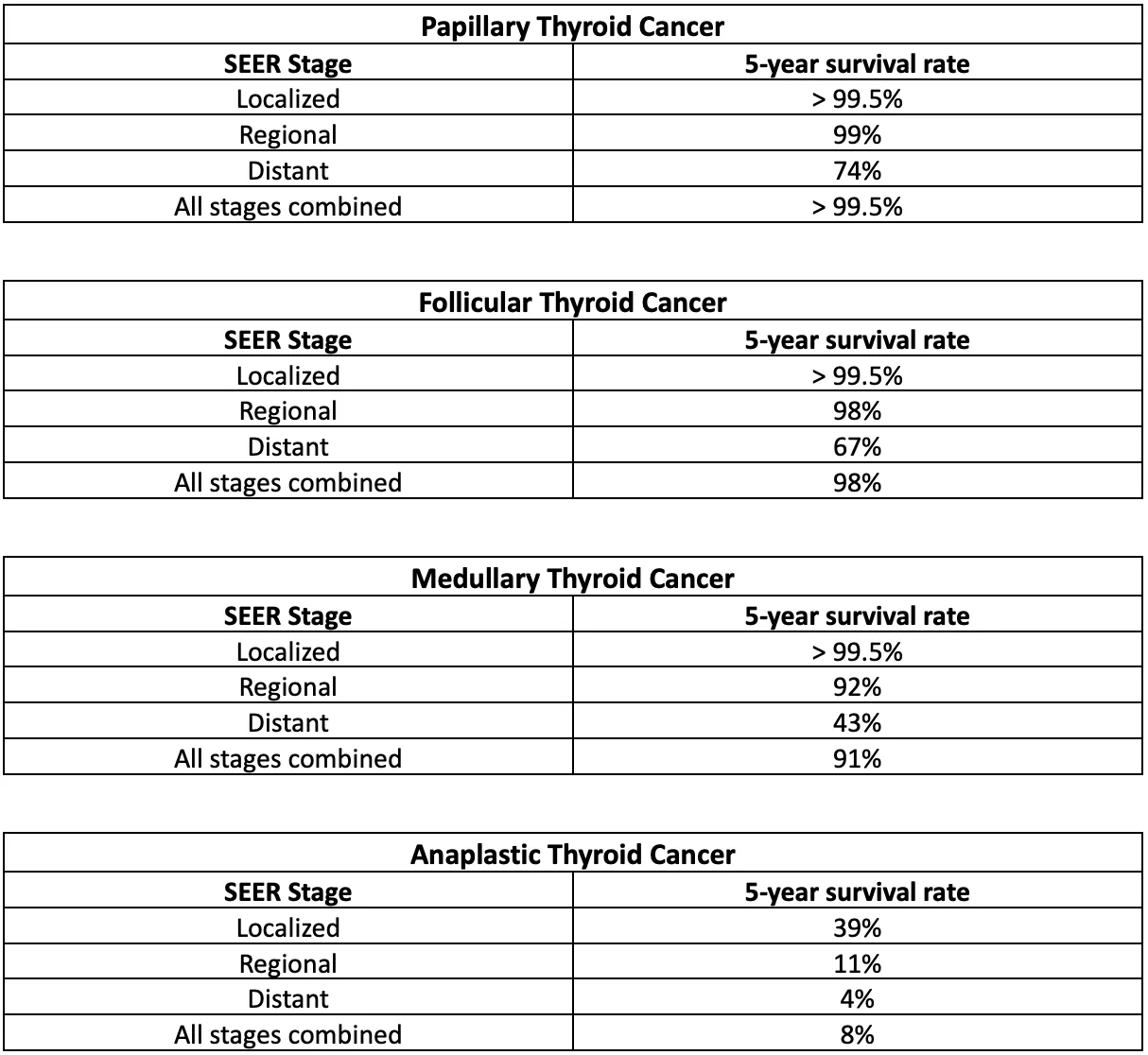Thyroid Cancer Survival Rate
What Is Thyroid Cancer?
Thyroid cancer is cancer of the thyroid gland. Cancerous cells start to form and grow out of control in the tissues of the thyroid gland, and this mutation leads to the accumulation of a mass of cells called a tumor. When this tumor invades other parts of the gland and surrounding lymph nodes and spreads beyond the neck to the bones, lungs, and other body parts, the process is known as metastasis. [1]
Types of Thyroid Cancer
There are 2 main cells in the thyroid gland, follicular cells and C cells. The different thyroid cancer types depend on which type of cells the cancer is developing from. There are many types of thyroid cancer:
Differentiated Thyroid Cancer
- Well-Differentiated Tumors: Includes papillary thyroid cancer and follicular thyroid cancer
- Poorly Differentiated Tumors or Undifferentiated Tumors: Anaplastic thyroid cancer
Medullary Thyroid Cancer
Differentiated Thyroid Cancer
These thyroid cancers develop from follicular cells. The cancer cells of differentiated thyroid cancer are similar to normal thyroid cells in appearance. These types of cancer are treatable and slow growing, and they can even be cured. [2]
Papillary Cancer
Papillary carcinomas are the most common type of thyroid cancer, and they typically develop in just one lobe of the gland. Papillary cancers are slow growing and treated successfully even if cancer spreads to the lymph nodes.
Follicular Cancer
Follicular cancer is the second most common type of thyroid cancer. Iodine deficiency is considered a risk factor for follicular thyroid cancer. [3] Follicular thyroid cancer can metastasize to other parts of the body, but the prognosis is still good, if not as good as that of papillary cancer.
Anaplastic Thyroid Cancer
It is an aggressive transformation of differentiated thyroid cancer. [4] The cancer cells are undifferentiated, do not look like normal cells of the thyroid gland, and spread quickly outside the neck into other parts of the body. Anaplastic thyroid cancer is a very hard-to-treat type of thyroid cancer.
Medullary Thyroid Carcinoma
Medullary thyroid carcinoma (MTC) is the rarest thyroid cancer, making up just 4% of all cases. These cancers develop from the C cells of the thyroid gland and can spread to lymph nodes, the liver, or the lungs before it is even discovered. [5]
What Are the Signs and Symptoms of Thyroid Cancer?
Thyroid cancer doesn't produce early signs and symptoms, and they appear only when the tumor gets bigger. A doctor can detect a tumor during a physical exam, but the following signs and symptoms can indicate any abnormality in the thyroid gland or neck area.
- A lump in the neck that grows quickly
- Trouble breathing or swallowing
- Pain in the front part of the neck that reaches up to the ears.
- Hoarseness and chronic cough that doesn't go away. [6]
These conditions might also be caused by other non-cancerous conditions, so if you notice these signs and symptoms, immediately talk to your doctor to rule out any possibility that it might be cancer.
Thyroid Cancer Diagnosis and Staging
Diagnosing and detecting thyroid cancer has become easier in current times. Most cases of thyroid cancers are found in the early stages due to routine physical examinations or when patients talk to their doctors due to abnormal signs and symptoms. [7]
How Is Thyroid Cancer Diagnosed?
The following tests of the thyroid gland, blood, and neck are used to diagnose thyroid cancer:
- Laryngoscopy
Laryngoscopy is used to monitor the vocal cords' movement and if a tumor in the thyroid gland is pressing on the vocal cords.
- Blood Hormone Levels
Follicular cells and C cells produce important hormones, and their normal levels in the blood are disturbed due to a disease in the thyroid gland. Doctors suggest blood tests check for abnormal levels of TSH and calcitonin in blood.
- CT Scan
A CT scan makes detailed pictures of areas inside the neck so that the tissues and glands are shown clearly.
- Ultrasound Exams
Ultrasound exams use high-energy sound waves to produce a sonogram that shows the size of a thyroid nodule and whether or not it can be cancerous.
- Fine Needle Aspiration Biopsy
A fine needle aspiration biopsy removes a sample of thyroid tissue to view it under a microscope and look for signs of cancer.
Thyroid Cancer Staging
Thyroid cancer stages range from 1 to 4. The TNM system is used to describe and provide more detail about a particular stage, like the size of the tumor (T), if it has spread to nearby lymph nodes (N), and if the tumor has metastasized to distant sites (M). Stages of thyroid cancer differ according to tumor type: [8]


Is Thyroid Cancer Hereditary?
Family history is a prominent risk factor for thyroid cancer. Those individuals with a family history of MTC have a high risk of developing this type of thyroid cancer in their life. Doctors and researchers suggest genetic testing, blood tests, and thyroid ultrasounds for those individuals who might be carrying the genes linked to MTC. [7]
Some people can inherit a fault in a gene like RET gene. These changes in the genes give rise to syndromes like MEN2A and MEN2B, which increases the risk of MTC in affected individuals. About 25% of people with MTC have inherited faulty genes associated with MEN. [9]
Thyroid Cancer Survival Rate
The prognosis for thyroid cancer usually considers two separate metrics: survival rate and quality of life (QOL). Doctors and researchers typically define survival rate in terms of the five-year survival rate, which indicates the mean survival rate of patients who are alive five years after their diagnosis. The survival rate for thyroid cancer is highly dependent on the stage of the disease and the type of thyroid cancer, including tumor size and extent of metastasis, as well as on the underlying health status of the patient.
In general, thyroid cancers caught at earlier stages (stage 0/in situ, stage 1) have a better outlook. If cancer has metastasized, treatment is more difficult, but in any case, it is important to maintain hope. It is important to understand that survival statistics represent averages - they should not be taken as prescriptive determinations of your future outcome.
What Is the Survival Rate for Thyroid Cancer?
The survival probabilities differ for every individual with thyroid cancer, and the survival rate estimates are only there to give an idea of the long-term survival of people with similar types and stages of cancer.
A five-year survival rate is used to describe the probability of survival of a particular stage and type of thyroid cancer patient for at least 5 years after diagnosis.
These numbers are generated by the Surveillance, Epidemiology, and End Results Program of the National Cancer Institute to track the survival statistics for different types and stages of thyroid cancer.
The SEER database categorizes thyroid cancer in the following way;
- Localized
- Regional
- Distant
The five-year survival rates for these three stages of thyroid cancer are further distinguished according to a particular type of thyroid cancer.

It is important to understand that these numbers apply to the stage of thyroid cancer when it is first diagnosed. However, the survival rates of individual patients still depend on their overall health, age, response to treatment, and other factors that can positively impact the outlook of disease. [10] [11]
Thyroid Cancer Survival Rate by Age
The five-year survival rates depend on how early thyroid cancer is diagnosed. 65.4% of patients with thyroid cancer are diagnosed at local stages, which means that their 5-year survival rate is 99.9%.
Thyroid cancer is most prevalent and frequently diagnosed in people aged between 45 and 54 years old. The median age of patients at the time of diagnosis of thyroid cancer is 51 years in both sexes and all races. The death rates of thyroid cancer patients increase with age. Hispanic males have a death rate of 0.6 per 100,000 persons, and Hispanic females have a death rate of 0.7 per 100,000 persons due to thyroid cancer.
The highest percentage of deaths caused by thyroid cancer is seen in patients aged between 75 and 84 years old, with 74 being the median age at death. [11]
Survival Rate of Thyroid Cancer in Women Vs. Survival Rate of Thyroid Cancer in Men(1)
Thyroid cancer is common in people with a family history of this disease. But it is also more common in women as compared to men.
The rates of new cases of thyroid cancer were most prevalent in the following groups of people of different races, ethnicity, and sex;
- Non-Hispanic White Males: 8.8 per 100,000 persons.
- Non-Hispanic Asian/Pacific Islander: 23.0 per 100,000 persons.
1 Note that here, we are using the terms "women" and "men" to refer to female and male biological sex at birth, respectively.
Thyroid Cancer Treatment Options
Thyroid cancer has many treatment options due to the contributions of a multidisciplinary team, including surgeons, medical and radiation oncologists, radiologists, endocrinologists, etc.
The treatment options highly affect the survival rates of thyroid cancer patients. Taking into consideration the type and stage of thyroid cancer and the patient's overall health, most thyroid cancers can ensure a disease-free survival of the patients.
The following treatment options are available for thyroid cancer;
- Surgery
- Radioiodine therapy
- Chemotherapy
- Targeted therapy
- External Beam Radiation Therapy
Clinical Trials for Thyroid Cancer
Receiving a thyroid cancer diagnosis can be very stressful for the patients and their family members. While most people benefit from a combination of surgery, hormone therapy, or chemotherapy, doctors recommend clinical trials for thyroid cancer patients with recurrent cancers so that researchers can study new drugs, treatment combinations, and new approaches to treat and cure thyroid cancer.
People of all types and stages of thyroid cancer can participate in clinical trials. You may talk with your healthcare team and consider looking into potential clinical trials through Power. In this way, thyroid cancer patients can contribute to the ongoing research on thyroid cancer, benefit directly from the clinical trials, or help other people in the future that can develop thyroid cancers.
Conclusion
Takeaway
Most of the time, thyroid cancers are curable by surgery and other treatment options if the cancer is detected at an early stage. However, if surgery cannot remove the cancer completely, doctors plan a different treatment approach to destroy most parts of the tumor and prevent the cancer from coming back.
Thyroid cancer responds well to treatment options available, which is why the relative survival rates are higher than most types of cancers.